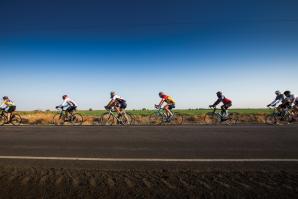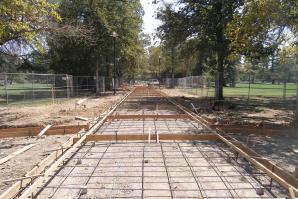Fleeman is talking about a transformation taking shape in the soul of the city of Davis, a community marked by slow growth, environmentalism and small startups.
Fleeman ticks off the factors re-shaping the landscape: The University of California, Davis, is about to step onto the global stage as a world-class research institution, bound to lead to business development in its backyard; some heavyweight companies already are setting up shop; the city’s high overhead costs to maintain parks and trails are draining coffers; as the city’s population ages, more money will go to senior resources; and a lack of housing and jobs threaten Davis’ vitality.
With these pressures looming, some residents and businesspeople are deciding to embrace the change rather than let Davis’ well-tended identity be obliterated. A community group named Designing a Sustainable and Innovative Davis Economy (DSIDE) is leading a conversation about how best to take advantage of post-recession business opportunities while hanging on to Davis’ essence.
“My view of the community is that most people like the small-town atmosphere that has emerged here and weathered substantial growth factors in the last 50 years,” says Fleeman, a DSIDE member. “It’s a walkable, downtown-focused college town, a special kind of community that we’ve been able to retain. But there is this impending, inevitable conflict.”
“Davis residents think about what they want, and how they want to live. … When you live here, you know what you’re choosing. It’s a purposeful culture that people work hard to maintain.”
Randii MacNear, manager, Davis Farmers Market
UC Davis has a mission to become one of the top research universities in the world, Fleeman says, and that’s good. “They’re creating a beautiful campus, they just started another billion dollars in new structures, and the expansion will bring nothing but opportunities for the community.
“But it’s a force to be reckoned with. It poses a question for the community. How do we accommodate our largest employer but still remain faithful to our core values?”
The steering committee for DSIDE, formed in 2010, meets twice a month. The committee includes representatives from the Davis Chamber of Commerce, the university, Yolo County Visitors Bureau, Downtown Davis Business Association, the city’s Business and Economic Development Commission and local business and property owners.
The group’s ultimate goal is to foster economic growth, particularly from university research, and to recruit and expand sustainable businesses.
Randii MacNear, longtime manager of the Davis Farmers Market, believes farming, food and tourism may be the key to growing in a way that suits Davis. She also understands the sensitivity of cultivating growth in the community.
“Davis residents think about what they want, and how they want to live,” she says. “They are constantly creating and evaluating. When you live here, you know what you’re choosing. It’s a purposeful culture that people work hard to maintain.”
Rochelle Swanson, a city councilmember and co-chair of DSIDE, says the recession made the debate over Davis’ future unavoidable. While the city is cutting spending, expenses are increasing and flat revenues are starting to take their toll.
“The downturn in the economy made people more open to looking at how we can create jobs and grow the economy,” she says. “We had to ask ourselves, how do we position ourselves coming out of the recession?”
Swanson, a land-use consultant who owns two restaurants in Davis, says the perception of Davis as anti-business is exaggerated but might have hindered growth.
“We do have a reputation for being slow-growth, but we have to differentiate between economic growth and residential growth, or sprawl,” she says. To that end, DSIDE has reached out to the community to educate the public and get input about what the economic model of Davis can and should be.
“The city processes have been difficult in the past, and we haven’t delivered a cohesive message to outsiders,” Swanson says. The city should capitalize on its location on the Interstate 80 corridor, its diverse and vibrant downtown, and an airport nearby.
Already, the city has become more business-friendly by streamlining some of its permitting, she says, and more importantly, the city staff and council is more open to looking outside its borders to engage with the Yolo and Solano county regions.
Fleeman says the resident-to-job ratio in Davis is too low, with 66,000 residents vying for about 30,000 jobs. He wants to see the city leverage its assets, much like Menlo Park negotiated improvements from Facebook when the company located there.
He says the community should support UC Davis graduates by offering affordable homes, jobs and opportunities to start businesses.
“People talk about how jobs, businesses and expansion will ruin this place, but Davis can embrace change on its own terms and still retain its identity and create more jobs,” Fleeman says. “I think we’re up to it. There are a lot of bright people in this community.”
Recommended For You

#YOLO
The 7 best bike rides in Yolo County
Lovely scenery along gently rolling foothills has always made Yolo County an ideal place for cyclists, but who knew everyone took it so seriously?

Campus Construction
Projects keep the campus investing in its future
Before UC Davis played a huge role in bringing science and agriculture together and changing the course of history for California and the world, the importance of collaboration across disciplines was well recognized. That vision is perhaps nowhere better exemplified than at the campus Quad — the true heart of the campus since its founding — where the new Centennial Walk was unveiled last October.



